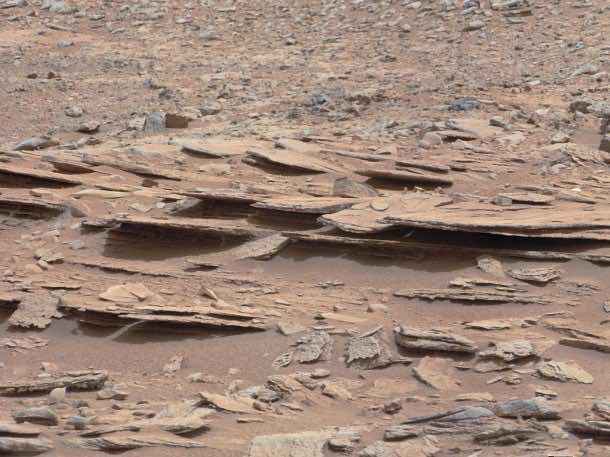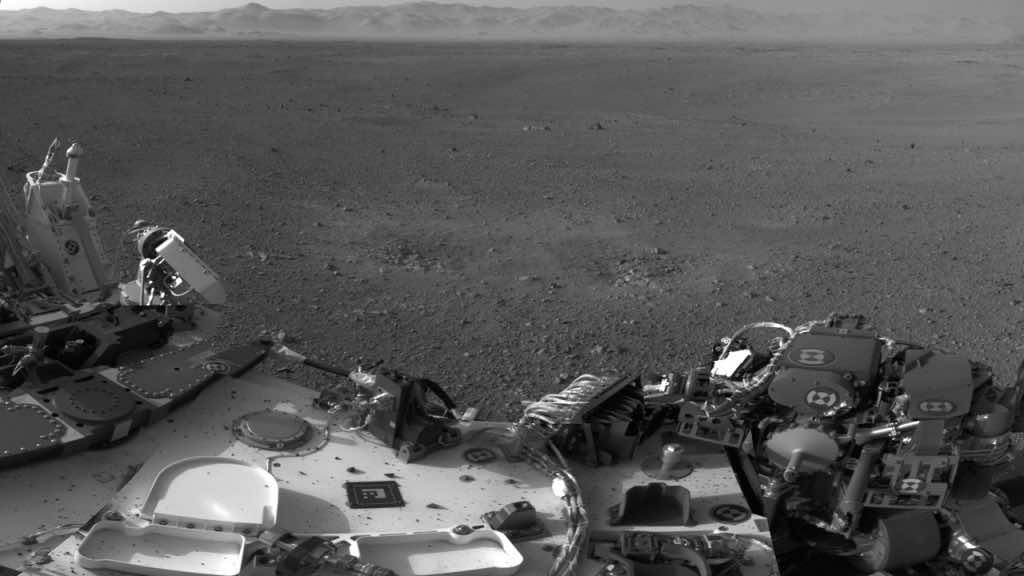August 6 was marked as the second anniversary of Curiosity, the rover on Mars. A number of images received recently, show how the conditions on Mars have taken their toll on the rover since it landed on Mars, two years ago. The Martian atmosphere has proven to be harsh for the machine. When one compares the amount of information that the mission has provided from the Red planet with the rate that the rover is decaying at, questions arise over the practicality of the mission. The environment up there is extremely hostile for the machine as sturdy as Curiosity.
The temperature up there fluctuate between 20°C (70°F) high and -73°C (100°F) low, during the day. Dust storms rage across the surface and cover the rover in fine particles. Adding to all that, the sharp ground surface damages the rover’s wheels, causing the controllers to come up with solutions, such as driving backwards to reduce degradation. There are some holes intentionally put on the £1.5 billion ($2.5 billion) rover to drain the sand through and provide added traction. Other however are a result of the sharp ground surface, the tears in the wheels, piercing the thin aluminum.
The rover, now being there for more than 729 days, is driven carefully now. And occasionally the team looks for alternate routes if the present on is too hazardous for the machine to venture. That is not always possible though, for about half of July, the rover had to venture through an area of hazardous rocks on Mars called Zabriskie Plateau, upon the instructions of the rover team at Nasa’s Jet Propulsion Laboratory in Pasadena, California.
Damage to the wheels of curiosity from driving through such terrains, lead to finding alternate routes and bypassing the hazardous ones whenever feasible. Other parts of the rover are however caked in Martian dust. Curiosity is powered by an on-board nuclear power source, a small radioisotope thermoelectric generator (RTG), which contains 10.5 pounds of Plutonium-238. This is an advantage to Curiosity, as Opportunity is suffering due to the dust problem, as it is solar powered. ‘The accumulation of dust is not a concern,’ according to what a spokesperson for Nasa said. ‘Dust buildup matters more on Opportunity, which is solar powered.’
Still over time, dust buildup is taking its toll as most of curiosity’s wiring is exposed to the harsh conditions. The major science goal of the Curiosity was to determine whether Mars ever offered an environment that was favorable for microbial life, the task it fulfilled during its first year of operation. In an area called Yellowknife bay, clay bearing sedimentary rocks on the crater floor, yielded evidence of an environment similar to a lakebed environment that is believed to be there billions of years ago, which offered fresh water and showed signs of all the ingredients necessary to host life.
‘Before landing, we expected that we would need to drive much farther before answering that habitability question,’ said Curiosity Project Scientist John Grotzinger of the California Institute of Technology, Pasadena. ‘We were able to take advantage of landing very close to an ancient streambed and lake. Now we want to learn more about how environmental conditions on Mars evolved, and we know where to go to do that.’
During its second year the rover is headed for a long term science destinations on the lower slopes of Mount Sharp.
These destinations are almost two miles away from the current location of Curiosity, but there lies an “appetiser” outcrop named after a base layer of the mountain called Pahrump Hills, which the rover will have to cross. We wish best of luck to Rover for it’s future endeavours.

